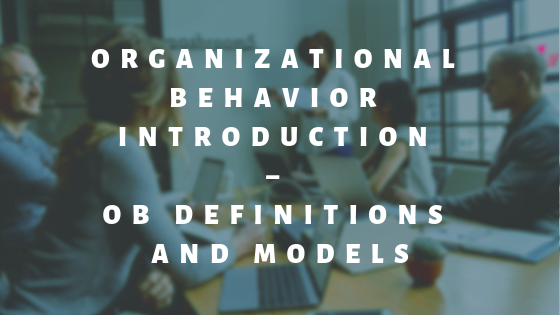In this tutorial, we will learn about identifying my business choice to be successful entrepreneurs, and we need to be continually innovating and looking for opportunities to grow our startups.
Swot Analysis:
“Albert S Humphrey” originates from it in the 1960s. Swot analysis is as useful as it was then. SWOT is the analysis of the company’s STRENGTH, WEAKNESS, OPPORTUNITIES, and THREATS to identify a strategic niche that the company could exploit. Swot analysis merges the external factors (environment analysis, opportunities, and threats identification) with the internal forces (company’s resources analysis, strengths, and weakness identification).
Identifying my business choice is to be successful entrepreneurs; we need to be continually innovating and looking for opportunities to grow our startups. But how do you find new opportunities to take your startup to new markets and growth levels? Here are four ways to identify more business opportunities.
SWOT analysis is critical. An entrepreneur can access the feasibility of his goals and objectives using the outcome of that analysis and identification of the company’s opportunities.
The entrepreneur who has conceived an idea in his mind would be able to evaluate whether such plans, mission, and objectives are even close to realism are in the wave of air only. If they are realistic, the entrepreneur can continue to formulate strategies.
If they are not practical, the entrepreneur should amend and modify plans and discard the same to create a new one, which has more odds of success.
There are four components of this analysis. Strengths weaknesses are often internal to your organization, while opportunities and threats generally relate to external factors. For this reason, the SWOT analysis is sometimes called internal, external review, and the SWOT matrix is sometimes called the model.
Strength
- What advantages does your idea have?
- How does it serve society better than anyone else?
- How would you use unique or lowest-cost resources to your thoughts that others can’t?
- What would be your strengths in the market ones this idea is materialized.
- What factors mean that you get the sale?
- What is your innovation’s unique selling proportion (USP)?
Weakness
- What is the further scope of improvement?
- What are the things that need to be avoided?
- What are people in your market likely to see as weaknesses?
- What factors lose you sales?
Opportunities
- What excellent opportunities can you spot about the innovative idea you have?
- What exciting trends are you aware of?
Useful opportunities can come from such things:
- There are changes in technology and markets on both a broad and a narrow scale.
- There are changes in government policy related to your field.
- There are changes in social patterns, population profiles, lifestyles, modifications, and so on.
- There are changes in local events.
Threats
- What obstacles are likely to be faced?
- What are your competitors doing?
- Are quality standards or specifications for your job products or services changing?
- Is changing technology threatening your position?
- How could any of your weaknesses seriously threaten your business?
When you are looking at your strengths, think about its relation to your competitors. A useful approach when looking at opportunities is to look at your advantage and to ask yourself whether these open up any excuses. Alternatively, look at your weakness and ask yourself whether you can open up opportunities by eliminating them.
Pestle Analysis:
It stands for POLITICAL, ECONOMIC, SOCIOLOGICAL, TECHNOLOGICAL, LEGAL, and ENVIRONMENTAL.
Audit of environmental influences on the business idea to use this information to ascertain the factors affecting the likely project and thereby guiding strategic decision making in accordance.
The assumption is that the entrepreneur can audit his influencing environment and assess potential threats to his plans; it will be better placed in the market.
It is a valuable tool for understanding risks associated with several forms of markets, growth or decline, and the position, potential, and direction for an individual business or organization. The six elements form a framework for reviewing a situation.
A summary of this type is multi-faceted about a particular business required from the technique the picture or produced would be unclear or ambiguous. A scan of the external macro-environment that is likely to influence the business idea can be expressed in the following factors:
Political Factors
- Tax policy.
- Employment laws.
- Environmental regulations.
- Trade restrictions and tariffs.
- Political stability.
- Government and security.
- The rules and deregulation trend.
- Environment and consumer protection legislation.
Economic Factors
- In the current project economic growth, inflation, and interest rates.
- Exchange rates.
- Stage of the business cycle.
- Unemployment and labor supply.
- Labor costs.
- If levels of disposable income and income distribution.
- Impact of globalization.
- Impact of technological or other changes on the economy.
Social Factors
- Health awareness.
- Population growth rate.
- Age distribution.
- Carrier attitudes.
- Emphasis on safety.
- Within population health, education and social mobility, and beliefs.
- Population employment patterns, job market freedom, and approaches to work.
- For press attitudes, public opinion, social attitudes, and social factors.
- Lifestyle choices and beliefs.
Technological Factors
- R&D Activity.
- Impact of emerging technologies, research, and development activity.
- The internet effect, reduction in communications costs, and increased remote working.
- Result of technology transfer.
Legal Factors
- Licensing framework.
- Employment laws.
- Competition laws.
- Foreign transaction laws.
- Taxation laws.
Environmental Factors
- Environmental impact.
- Environmental legislation.
- The energy available and costs.
- Waste disposal.

